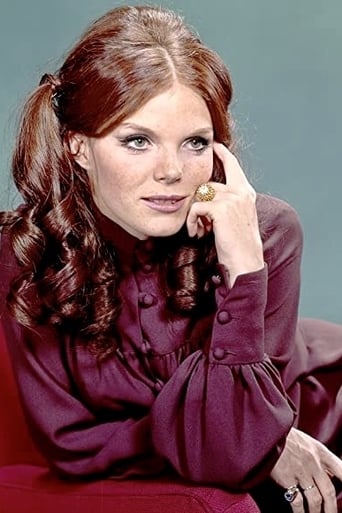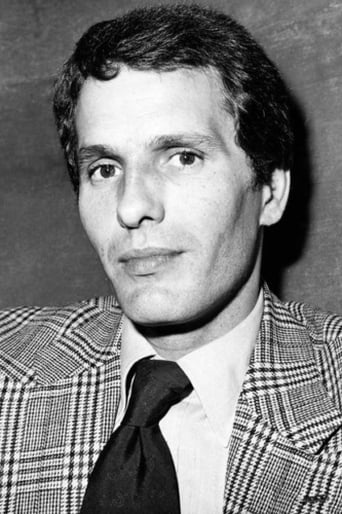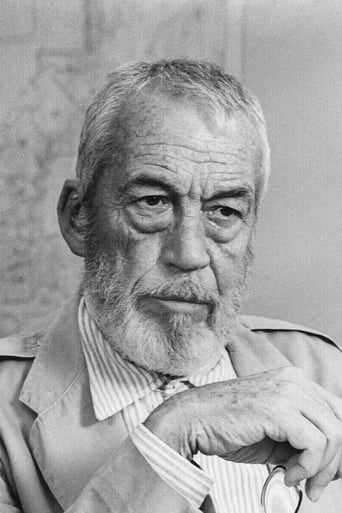Cebalord
Very best movie i ever watch
Greenes
Please don't spend money on this.
Kayden
This is a dark and sometimes deeply uncomfortable drama
ma-cortes
This spectacular movie starts in Berlin during Oympic Games 1936 with the African-American Jesse Owens as champion . There reunites a Nazi officer (Stacy Keach) , a veteran American journalist (John Huston), a famous actress (Samantha Eggar) and an US General (Henry Fonda). Keach gives gifts to the hosts captioning : 'In God we trust' . The group of different nationalities vows to meet five years later but WWII interrupts their lives . Los Angeles 1942 , the upright General incarnated by Henry Fonda is assigned to West Point Academy and his son (Ray Lovelock) takes the ranks to North African campaign . After the action is placed on several locations , as London , West Point, Le Hauvre (France) . Island of Creta , October 1942, an official (Giuliano Gemma) whose mission is to destroy a German installation before being used against the Allied forces . Following the feats about Partisans and a parachuted squadron (led by Giacomo Rossi Stuart) attacking a train (commanded by Helmut Berger) transporting a big German-built cannon (whose scenes are taken from ¨Battle of commands¨). Meanwhile the German actress (Samantha Eggar)for the reason his Jewish origin is detained by SS and Nazi official Berger is enamored to prostitute (gorgeous Edwige Fenech) . Posteriorly , it tells battles in Mareth line March 14, 1943 and Gabes , North Africa , engaging war German Army against British VIII army . There a captain (Gemma) neutralizes a bomb camp and Nazi officer (Berger) impersonates Allied soldier to destroy supplies . Taking place spectacular battles with miniaturized tanks (whose footage is taken from ¨Battle of Alaimen¨ by Giorgo Ferroni and the same producer Mino Loy) .This is a regularly conceived WWII with action filled , studio character , drama and exciting battles , but nothing special . Packs inaccurate details and an extremely talented though wasted cast make this one of all-time great Italian epic productions though failed . The film contains news-reel documentary , stock-shots vignettes and miniatures , however lost continuity with several cuts and zooms . The battle scenes were shot in desert of Tabernas (Almeria) where in the 60s and 70s were filmed lots of Westerns . Furthermome, a prestigious cast , as Fonda , Eggar , Keach and appears as narrator the great Orson Welles . Numerous Italian secondaries as Jack Stuart , Andrea Bosic , Venantino Venanti , Ken Wood , Ida Valli and Rick Battaglia habitual of Peplum and Spaghetti . The tale was middlingly directed by Umberto Lenzi , he often used the pseudonym Hank Milestone and Humphrey Logan . He's an expert on wartime genre such as he proved in ¨ Desert commandos¨ , ¨Battle of commandos¨, ¨From hell to victory¨, and ¨Bridge to hell¨.
bkoganbing
This film has the unmistakable whiff of tax write off about it and I can't believe the non-Italians in this Italian made World War II film weren't doing this one for nothing more than a paycheck and a European vacation.For an Italian film you would think Italy would be mentioned somewhere in this story. The climax of the movie is the battle for Tunisia where the Italians had a lot of soldiers. The battle scenes are merely stock footage from other and better films.The only tie in this whole story is a meeting in Berlin of retired army general Henry Fonda, war correspondent John Huston, German-Jewish actress Samantha Eggar and German major Stacy Keach. Meeting at the time of the Olympics there, the four dismiss the possibility of war.After that it seems like you're watching four or five separate films all at once. Everyone seems to be just reciting the dialog by rote and hurrying off to do better things presumably. Even Orson Welles who narrates the English language version, can't whip up any excitement in his voice.It's just another one done for the money.
paul_johnr
Italian producers Mino Loy and Luciano Martino shelled out a generous budget for this 1978 war epic commonly known as 'The Greatest Battle' but also stamped with alternative titles like 'Battle Force' and 'The Battle of the Mareth Line.' The film is an ambitious project that was clearly made for theaters worldwide, using higher-shelf locations, production values, and cast. Several crew members even used American aliases (including Martino as 'Louis Martin') to hide their unflattering résumés.'The Greatest Battle' was foolishly dropped into the hands of Umberto Lenzi, who co-produced, co-wrote, and directed this film under the pseudonym 'Humphrey Longan.' The Italian was no stranger to war movies, having drawn notice with 'Desert Commandos' and 'Battle of the Commandos' during the 1960s. By the late 70s, however, Lenzi's reputation was in decline after turning out a series of increasingly violent gialli and repugnant horror flicks. This production was a golden opportunity for Lenzi to revive his career, but he continued to ignore the most basic fundamentals of his craft and only widened his status as an exploitation hack.It is difficult to explain how 'The Greatest Battle' goes wrong because it fails on so many levels. The film models itself after box office smashes of its era like 'Midway' and 'Patton,' which integrate large-scale action with humanistic story lines. Unfortunately, 'The Greatest Battle' falls victim to bad writing, awful direction, and shod technical work. Lenzi's script, co-written by Cesare Frugoni, is a muddled effort to link friendships at the 1936 Olympic Games in Berlin with military happenings in North Africa during 1942 and '43. The concept had potential with such a talented cast and large budget, but it is all poorly executed, as if the filmmakers weren't sure of how to develop their ideas. To make matters worse, the vast action scenes filling most of The Greatest Battle's running time have a cheap look that spoils their effectiveness.'The Greatest Battle' starts just after the 1936 Olympic Games, when four internationally-linked people share a farewell dinner: U.S. Army general Foster (Henry Fonda), German major Mannfred Roland (Stacy Keach), British war correspondent Sean O'Hara (John Huston), and German, half-Jewish actress Annelise Ackermann (Samantha Eggar). Their conversation moves to the possibility of war in Europe, which they find unlikely. Little do they know, however, that Germany would invade Poland in 1939 and cause a series of events to forever interconnect them at the Mareth Line, a fortification system in Tunisia where the allied forces launched their offensive.Most of the film consists of allied battlefield efforts against Germany, with the main characters followed intermittently and Orson Welles supplying narration. Lenzi's obsession with action footage leads to an entire cast being wasted. The main characters give this film a human element, but they are only superficial glue to justify the carnage that follows. Henry Fonda spends most of his time sitting in a West Point office while donning his army uniform. Ray Lovelock, who gives a decent performance as General Foster's son, is heroic in battle and quickly becomes an aide to General Patton. John Huston brushes with the front lines as an over-the-hill war correspondent and recites a poem by John Donne. Stacy Keach leads his men reluctantly until he dies in combat. Samantha Eggar, who becomes Keach's wife, is pressed for information by the Gestapo and commits suicide. Helmut Berger enters the film as a devoted German lieutenant, besides Giuliano Gemma as a British army captain. Other names in the European film industry pop up, such as Edwige Fenech, Ida Galli, and Venantino Venantini. However, most of these subplots have no flow or rhythm, as if they were randomly stuffed into the main plot of North African battles.Better moments are in the action scenes, populated by tanks, jeeps, heavy artillery, and soldiers. These scenes (filmed in Spain) move quickly and use eye-opening sequences like German tanks chasing after British support vehicles and extreme close-ups of allied tanks plowing through enemy lines. Very little of the footage is stock, which Lenzi is known to use, and it maintains a frenetic pace. But even the action scenes have a cheap feel, since they are horrendously edited (by exploitation woodchopper Eugenio Alabiso) and sneak in plastic models running over miniature landscapes. Moving vehicles are seen jumping into freeze-frame before an explosion. Extras are seen bailing out twice during a given battle and angles seem to change indiscriminately, leaving the viewer unsure of which army he's looking at. While the action scenes have their strong points, there are other times when it's all a complete mess.Cinematographer Federico Zanni's visuals are decent, capturing a hot, gritty atmosphere. The score - paper-thin takes by Franco Micalizzi (as 'Frank Michaels') - is generic and not particularly impressive. Sound quality is poor and the dubbing of voices is often incoherent. Overall, 'The Greatest Battle' is a rotten entry that never comes close to its goal. It is little more than 'another' European war production with several qualified actors dragged along for the ride.Copies of 'The Greatest Battle' are hard to locate. A DVD with restored footage and widescreen presentation has been released in Germany, but it does not contain an English language option. English language tapes occasionally circulate on the Internet, including several that have been edited to pieces by U.S. distributors. The version used for this review was a 1997 VHS cassette from HBO Home Video, considered one of the 'better' editions despite its terrible pan and scan format. If anything, 'The Greatest Battle' would be nice to watch on the big screen, as certain footage doesn't present itself well on a television set. But I don't expect a 'Lenzi Festival' anytime soon, at least not in New York.* out of 4
Michael A. Martinez
I don't understand how Luciano Martino and Mino Loy were able to raise the money to hire so many big-name actors of the time (such as Orson Welles, John Huston, Henry Fonda, and Samantha Eggar) but they still had to rely on plentiful stock footage from earlier war movies like THE BATTLE OF EL ALAMEIN and LEGION OF THE DAMNED. Umberto Lenzi's directing is good as usual, with lots of emphasis placed on the well-edited action scenes. The budget for such scenes seems quite minimal however, with a lot of the same actors dying over and over again, and a few really shoddy toy tanks exploding (though a few shots of these tanks were lifted from other movies).As for the cast, just about everybody that had anything to do with the Italian movie industry shows up somewhere in the movie, from familiar dubbing voice Robert Spafford as Patton to future director Michele Soavi as Fonda's dead son. The photography and music are all top notch, yet this movie has gotten ad reviews accross the board. Why? Because it has little or no plot to speak of. There are so many characters and so much going on in the film that it has no focus or direction. Eggar's character has no point in the movie other than she makes it slightly longer, and Edwige Fenech gets one lousy scene as a French prostitute. Eventually, most of the actors end up in Africa fighting on one side or the other and (surprise!) the Germans lose and all the German characters die, the end. But who goes to watch a good old-fashioned war movie for the plot anyway? There's plenty to enjoy if you like watching German soldiers lying in the road pretending to be dead so they can shoot the American soldiers that run up to help them. It also contains a number of memorable scenes like when Stacy Keach gets lost in the desert and falls over after about 1 minute of walking, and a very goofy case of bad communication when Ray Lovelock attempts to call up his father and the two barely manage to get through even a few words...The ending really comes out of nowhere though, but it's made especially funny as John Huston seems to just get bored of the movie and walk off saying "seeya around" right into the camera! Definitely not a movie to miss...for fans of the genre.




